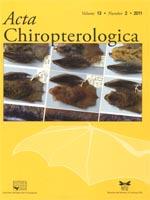Pacific sheath-tailed bats (Emballonura semicaudata rotensis) in the Mariana Islands declined greatly in abundance and distribution during the 20th century. The small island of Aguiguan now supports the only persisting population. We studied abundance and natural history of this population from 1995–2008. There was a likely population increase during the study, with 359–466 (minimum and maximum) bats counted at caves in 2008. Bats roosted only in caves, primarily those of relatively larger size. Bats were detected in only seven of 95 caves; three caves were always occupied when surveyed. One cave consistently had the largest colony ( ± SD = 333 ± 33.6 in 2008). Others held 1–64 bats. Cave environments showed no complexities in temperature or humidity. Preliminary observations indicate a litter size of one and the possibility of birthing timed to coincide with the transitional period leading into the rainy season (June–July). We review potential threats to E. s. rotensis on Aguiguan and make suggestions for conservation.
± SD = 333 ± 33.6 in 2008). Others held 1–64 bats. Cave environments showed no complexities in temperature or humidity. Preliminary observations indicate a litter size of one and the possibility of birthing timed to coincide with the transitional period leading into the rainy season (June–July). We review potential threats to E. s. rotensis on Aguiguan and make suggestions for conservation.
How to translate text using browser tools
1 December 2011
Status and Natural History of Emballonura Semicaudata Rotensis on Aguiguan, Mariana Islands
Gary J. Wiles,
Thomas J. O'Shea,
David J. Worthington,
Jacob A. Esselstyn,
Ernest W. Valdez
ACCESS THE FULL ARTICLE

Acta Chiropterologica
Vol. 13 • No. 2
December 2011
Vol. 13 • No. 2
December 2011




